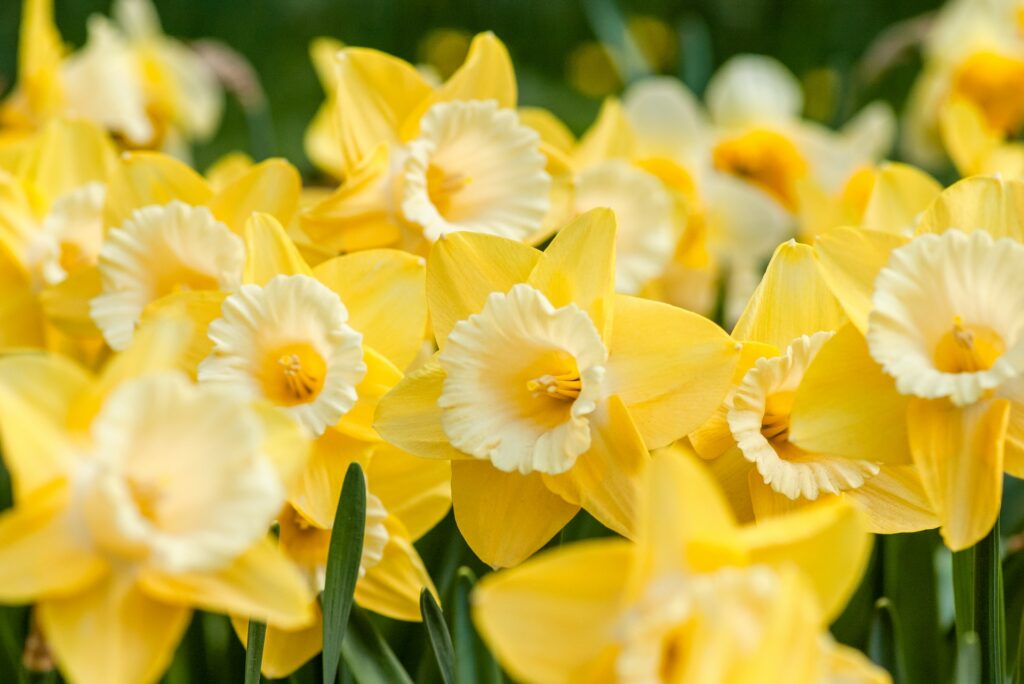The month of October ushers in a period of dramatic change in UK gardens. As the vivacity of summer gives way to the cool embrace of autumn, our gardens become a tableau of warm, earthy hues. The crimson and gold palette of October is both an enchantment and a signal: a reminder for gardeners to prepare for the upcoming winter months. For those of us in the UK, this month presents unique challenges and opportunities.
Whether you’re a gardening aficionado or a beginner, let’s delve into the nitty-gritty of October gardening in the UK, ensuring your patch remains both healthy and picturesque.
Tidying Up:
- Raking leaves: Deciduous trees shed their foliage during autumn. Whilst a smattering of leaves can look charming, it’s imperative to clear them off lawns. Left unchecked, they can smother the grass, denying it sunlight, leading to yellow patches. Accumulated leaves also harbour pests and diseases. However, rather than discarding them, compost them or turn them into leaf mould – an excellent soil conditioner.
- Pruning perennials: As perennials die back, it’s best to trim them, preventing rot and deterring pests. This also makes your garden look neater during the lean winter months.
- Removing annuals: Once they’ve had their summer flourish and are no longer in bloom, it’s time to bid them farewell and add them to the compost heap.
Planting for Spring:

- Bulbs: October is prime for planting spring-blooming bulbs. Daffodils should go in first, followed by tulips and alliums. Ensure they’re positioned with adequate spacing, in well-draining soil to prevent rot during the wetter months.
- Winter blooms: For those who crave colour in the colder months, consider bedding with winter-flowering plants like pansies and cyclamens, which thrive in cooler temperatures.
Protection from the Cold:
- Frost-sensitive plants: UK’s unpredictable frosts can spell disaster for tender plants. Species like fuchsias and pelargoniums should be moved to a greenhouse or conservatory.
- Mulching: A protective layer of mulch around plants can insulate the soil, safeguarding plant roots from frost and improving soil quality.
Lawn Maintenance:
- Mowing: Grass growth slows down with the drop in temperature. If you’re mowing in October, set your mower to a higher setting. Longer grass can better withstand the winter chill.
- Aeration and feeding: Use a garden fork or aerator to create small holes in your lawn, allowing it to breathe and improving water drainage. Following aeration, an application of autumn lawn feed can help strengthen the grass ahead of the colder months.
Harvest Time:

- Vegetables and fruits: Celebrate the season by harvesting autumnal produce such as pumpkins, squashes, and beetroot. Apples, pears, and late berries should also be plucked to prevent them from rotting on their branches.
Catering to Wildlife:
- Bird care: With winter approaching, food becomes scarcer for our feathered friends. Ensure bird feeders are clean and well-stocked. Fresh water is equally important, especially on frosty mornings.
- Hedgehog havens: Create shelters for hibernating hedgehogs using leaves, logs, or purpose-built hedgehog houses.
Pre-Winter Maintenance:
- Infrastructure check: UK winters can be harsh on garden infrastructure. Ensure fences, sheds, and greenhouses are in good repair to withstand inclement weather.
- Tool care: Clean, sharpen, and oil your garden tools. Proper maintenance ensures longevity and better performance come spring.
Future Plans:
- Reflection and anticipation: This is a wonderful time to assess your garden’s performance over the year. What plants thrived? Which areas need improvement? Start planning and sourcing seeds or plants for the upcoming year.
FAQ’s
What should I do if there’s an unexpected frost?
If frost is forecast and you have tender plants outside, try to cover them with fleece or move them inside if possible. After the frost, resist the urge to touch any frosted foliage until the sun has risen – it can cause more damage.
How do I prevent my pond from freezing?
Float a ball or similar object on the water’s surface. This will move with even the slightest wind, helping to prevent a complete freeze. Alternatively, installing a pond heater can keep a portion of your pond ice-free.
When’s the best time to compost in October?
Anytime! October is an excellent month for composting, especially with the abundance of fallen leaves. Combine green waste from your garden with the brown waste of the leaves for a balanced compost mix.
Can I still fertilise my plants in October?
It’s best to avoid high-nitrogen fertilisers, which can encourage tender growth at the wrong time of the year. Instead, opt for a balanced or potassium-rich fertiliser to strengthen plants for the winter.
How often should I water my plants in October?
With the cooler and often wetter weather, plants don’t need as much water as in the summer. It’s essential to keep an eye on the forecast and the moisture level of the soil. Overwatering can be detrimental, especially if there’s a risk of frost.
Should I leave my greenhouse door open or closed in October?
On sunny days, it might be beneficial to open the door for ventilation and to prevent excessive heat. However, as temperatures drop, especially during nights, it’s crucial to keep it closed to protect plants from the cold.
In Conclusion
October in the UK garden is a symphony of tasks that rewards with both immediate beauty and the promise of a vibrant spring. As you venture out, cuppa in hand, into the crisp mornings and mellow afternoons, remember that each task done now paves the way for a healthier, blossoming garden in the months to come. Happy gardening!








